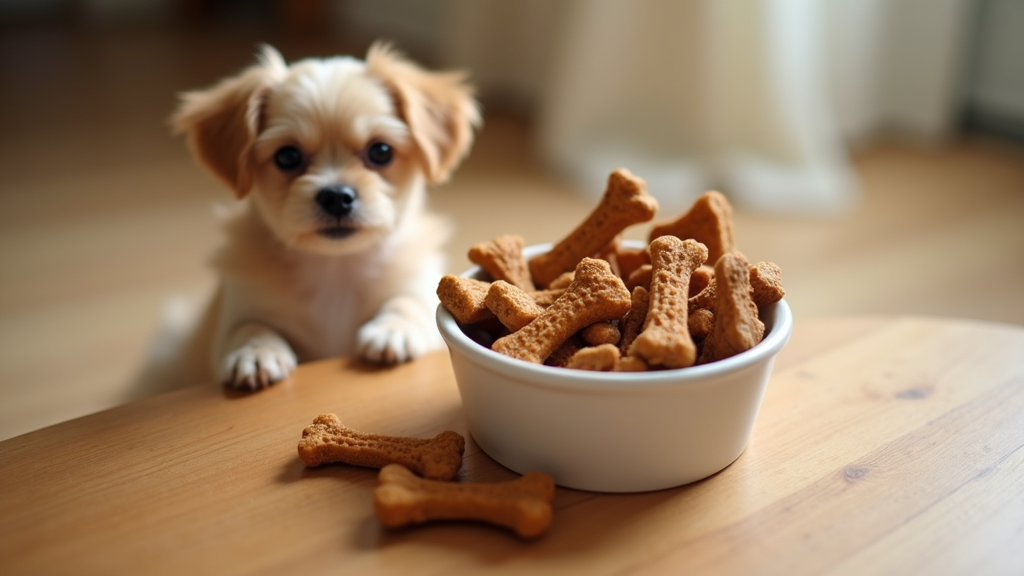Using treats for dog training is one of those simple strategies that creates real results and keeps your dog motivated. Getting the approach right with treats can speed up learning, help with tough behaviors, and make training sessions fun for both you and your pup. Training isn’t just about offering your dog a snack—it’s about building positive habits and clear communication. Here’s my all-in-one guide to getting the most out of treats in dog training, featuring practical tips and answers to some common questions people have as they get started.

Why Treats Matter in Dog Training
Treats play a big role in positive reinforcement training, which is the popular method for most professional trainers today. This type of training rewards your dog for doing the right thing, which helps them get what you want. Over time, your dog learns to repeat behaviors that earn rewards, and treats are usually the easiest type of reward to use because almost every dog is food motivated.
There’s plenty of evidence showing that positive reinforcement is effective, safe, and much easier on your relationship with your dog compared to older punishment-based methods. Using treats also gives you lots of flexibility, whether you’re working indoors or outside or dealing with both basics and challenging behaviors.
How to Use Dog Treats for Training Successfully
Getting good results with treats takes timing, consistency, and understanding what motivates your dog. Here’s what works for most dog owners:
- Pick the right treat: Soft, smelly, pea sized treats usually work great because dogs can eat them quickly, and they’re extra appealing. Save special high value treats for challenging situations, like the park or teaching a new cue.
- Use good timing: Give the treat right after your dog does what you asked for. This way, your dog connects the action and reward without confusion.
- Keep sessions short: Three to five minutes works for one session. Dogs can lose focus and get full fast, so it’s smarter to do several short bouts instead of one long one.
- Fade treats gradually: Once your dog knows a cue, start rewarding only the best responses or swap in praise, toys, or life rewards (like a walk). This helps prevent your dog from only listening when you have food.
- Match treat value to the difficulty: Use your dog’s regular kibble for easy things and break out the really good stuff (like tiny pieces of chicken or cheese) for tougher tasks.
Understanding Training Methods: The 7 7 7 Rule and More
Consistency might feel challenging when you’re juggling cues, routines, and your dog’s attention span. Some trainers suggest simple formulas to keep everything clear. One you might come across is the “7 7 7 Rule for Dogs.”
This rule means repeating a training cue seven times in a row, across seven separate training sessions, in seven different places. That helps your dog learn that “sit” or “stay” isn’t just for the living room; it also works in your yard, at the vet’s office, and out in the world. Mixing up locations and situations helps proof your dog’s skills, making sure they don’t think commands only matter in one spot.
Another method is the “123 Method for Dogs.” There are a few versions out there, but most often it’s about shaping a behavior in three steps—encourage the behavior, reward efforts, and only reward when your dog does the full behavior right. This approach is helpful for trickier things, like having your dog stay put as you walk away or recalling them in a busy park.
Dog Training Treats: Types, Portion Size, and Safety Tips
Choosing the right treats makes a big difference for your dog’s motivation and health. Here’s what I usually suggest:
- High value treats (for tough distractions): Bits of cooked chicken, low salt cheese, or freeze dried liver.
- Everyday training treats: Store bought soft treats, tiny chunks of hot dog, or even small pieces of carrot or apple for dogs who love produce.
- Dog food kibble: Yes, regular kibble can become a training reward, especially in low distraction spaces or for dogs who need to keep an eye on calories. Just be sure your dog actually wants it.
Treat size should be small enough to eat quickly (pea sized or smaller). You’ll use a bunch during training, so keep them tiny to avoid overfeeding. If you train a lot, reduce your dog’s meal portions a touch so they don’t gain weight.
Look out for allergies, and skip treats with dangerous ingredients like garlic, onions, raisins, chocolate, or additives like xylitol. Simple, single ingredient treats are always a safe bet, and if you’re ever in doubt, check with your vet for a thumbs up.
Real-World Examples: Using Treats During Training Sessions
Using treats during a training session creates lots of small wins for your dog. Here’s how I put treats to work with common commands and issues:
- Teaching “Sit” or “Down”: Lure your dog into position, say the cue, and give a treat right away. Repeat a few times before adding the cue word, making sure they’re solid on the action.
- Polite greetings: Ask for a “sit” before anyone greets your dog. Reward staying seated, and ease off on treats once it becomes a habit.
- Recall (“Come”): Begin inside or in your yard. Call your dog in a happy voice, reward with several treats (a jackpot!), and slowly add distractions and distance as your dog gets better.
- Crate training: Drop treats inside the crate to invite your dog in. Toss treats each time they chill quietly inside.
- Loose leash walking: Reward your dog for walking next to you with a treat every few steps. Gradually space treats farther apart as their skills grow.
Common Challenges and How to Tackle Them
- Picky eaters: Try several treats to find one that your dog can’t resist. Sometimes, warming up treats or using a mix helps boost interest.
- Overexcited dogs: Start with low excitement treats and quiet surroundings. If your pup gets fixated on the treat, switch to something less enticing or focus on calm behaviors.
- Disinterest in training: Mixing up the rewards—use praise, play, or access to a favorite toy—can ramp up your dog’s attention again.
Practical Tips: Making Treat Training Work for You
- Carry treats wherever you may need them: on walks, at the park, or on errands. Most pouches and even pockets fit small treat bags easily.
- Stay consistent with your cues. Use the same words and signals so your dog isn’t left guessing.
- Mix up your rewards. Sometimes just one treat, sometimes a “jackpot,” or even a fun toy or praise instead.
- If your dog turns down a treat, try a different one or train in a less distracting environment for a bit.
- If your dog needs to watch their weight, balance out treats by offering less food at meal times.
Final Thoughts
Treats are a quick, reliable way to speed up dog training, build strong habits, and make working with your dog more fun. Whether you’re focusing on obedience, tough behaviors, or fancy tricks, using treats the right way helps you and your dog form a great team. Stick with it, keep things positive, and always celebrate progress—even the tiny steps forward. Training is meant to be rewarding for both you and your dog in every possible way.
